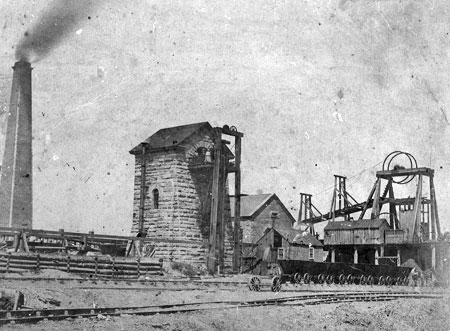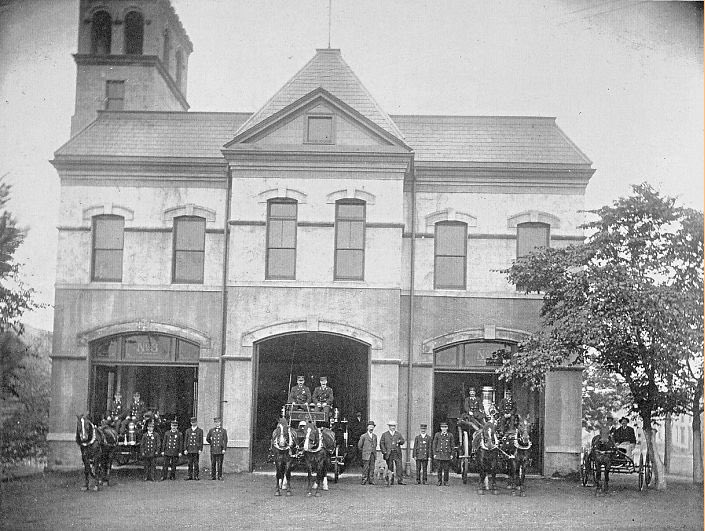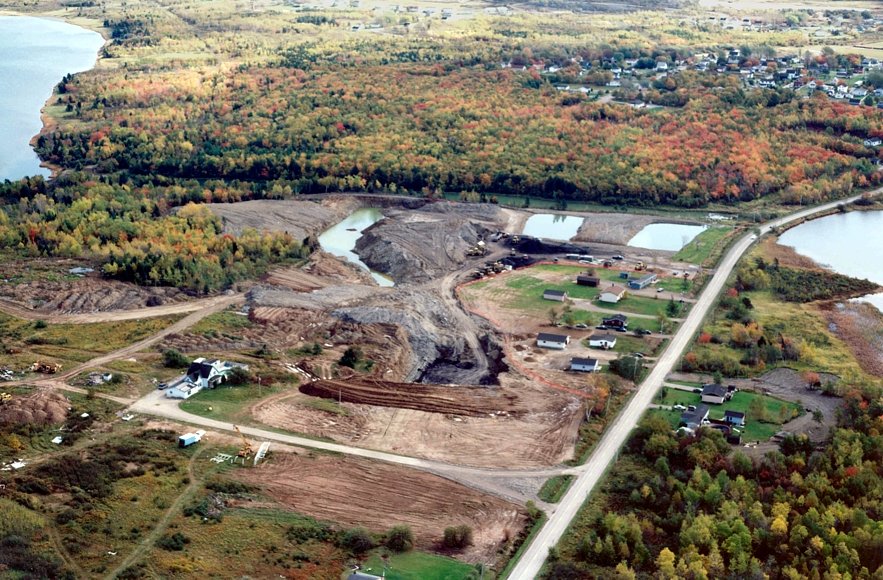The #Pictou Coalfield played an important role in #NovaScotia’s industrial history.
Check out this history of #coal mining in Pictou!
#nspoli #cdnpoli #nshistory @ns_moi @NS_Museum
@karla_macf_pc @TimHoustonNS @SeanFraserMP
Check out this history of #coal mining in Pictou!
#nspoli #cdnpoli #nshistory @ns_moi @NS_Museum
@karla_macf_pc @TimHoustonNS @SeanFraserMP

The #Pictou Coalfield's 15 major coal seams in the #Westville, #Stellarton, and #Thorburn-Greenwood areas hosted many mines that created jobs and provided fuel for #NovaScotians.
#nspoli #cdnpoli #NovaScotia
#nspoli #cdnpoli #NovaScotia

The discovery of #coal in #Pictou County is usually attributed to Reverend James McGregor who found it on the East River in 1798. MacGregor, who came to Pictou from Scotland in 1786, had a coal fire burning in his home – a novelty at the time - when he entertained...
#nspoli
#nspoli

...the political candidates the year before the 1799 provincial election.
John McKay was the first person given a lease to mine #Pictou #coal but it didn’t go entirely well for him. He was given permission in 1807 to mine on his father’s farm...
#nspoli #cdnpoli #NovaScotia
John McKay was the first person given a lease to mine #Pictou #coal but it didn’t go entirely well for him. He was given permission in 1807 to mine on his father’s farm...
#nspoli #cdnpoli #NovaScotia

...and a few years later coal became scarce – and more than doubled in price - during the War of 1812. McKay sold #coal to #Halifax for use by the navy, garrison and residents. He invested heavily in his operations but ran into trouble when the war ended in 1815...
#nspoli
#nspoli

...and #coal’s price dropped. He was eventually thrown in prison for his debts.
His lease later came to be owned by Edward Mortimer, George Smith, and Adam Carr until 1827 when the General Mining Association took over the coalfield as part of its 30-year monopoly...
#nspoli
His lease later came to be owned by Edward Mortimer, George Smith, and Adam Carr until 1827 when the General Mining Association took over the coalfield as part of its 30-year monopoly...
#nspoli

...on most #coal in Nova Scotia. The GMA also bought Reverend MacGregor’s 800-acre farm for £1,150 for its coal.
The GMA quickly developed coal operations at Albion Mines, a town the company founded and which was renamed Stellarton in 1870.
#nspoli #cdnpoli #NovaScotia
The GMA quickly developed coal operations at Albion Mines, a town the company founded and which was renamed Stellarton in 1870.
#nspoli #cdnpoli #NovaScotia

Several other mines were also worked during the 1800s. Fires and explosions caused several mines to close, although some reopened at later dates.
The GMA invested heavily and brought the industrial revolution to Nova Scotia.
#nspoli #cdnpoli #NovaScotia
The GMA invested heavily and brought the industrial revolution to Nova Scotia.
#nspoli #cdnpoli #NovaScotia

Our first steam engines were built by the GMA to power pit hoists and pumps, and to drive #coal ships. #NovaScotia's first railway (meaning it was powered by steam, not horses) was the Albion Mines Railway, built in 1839 to haul coal from the #Stellarton mines to docks...
#nspoli
#nspoli

...in #Pictou Harbour. It was only the second steam railway in Canada.
The GMA also helped professionalize (by the standards of the day) Nova Scotia’s mining industry by founding permanent mining communities and bringing skilled British miners to the province.
#nspoli #NovaScotia
The GMA also helped professionalize (by the standards of the day) Nova Scotia’s mining industry by founding permanent mining communities and bringing skilled British miners to the province.
#nspoli #NovaScotia

In 1872, the GMA sold all its #Pictou operations to the Halifax Company and withdrew from the coalfield.
In 1886 three of the four major coal companies operating in the Pictou coalfield - #Halifax, Vale and Acadia - merged to form the new Acadia Coal Company.
#nspoli #NovaScotia
In 1886 three of the four major coal companies operating in the Pictou coalfield - #Halifax, Vale and Acadia - merged to form the new Acadia Coal Company.
#nspoli #NovaScotia

Acadia was the main coal producer in #Pictou County until 1966. Over that time it became a subsidiary of #NovaScotia Steel and Coal, which in turn was a subsidiary of British Empire Steel Corporation (BESCO) and later the Dominion Steel and Coal Corporation (DOSCO).
#nspoli
#nspoli

Mining continued sporadically in many different mines into the 1900s with most operations creasing by 1960.
#nspoli #cdnpoli #NovaScotia
#nspoli #cdnpoli #NovaScotia

The only #coal mine operating in the #Pictou Coalfield today is the #Stellarton surface mine which is fixing subsidence issues caused by 200 years of pick-and-shovel mining, including many bootleg mines.
#nspoli #cdnpoli #NovaScotia

#nspoli #cdnpoli #NovaScotia


The mine is stabilizing the land so it can be used for development, while also creating jobs for #NovaScotians and providing fuel to Nova Scotia Power.
#nspoli #cdnpoli #NovaScotia

#nspoli #cdnpoli #NovaScotia


Unfortunately, the #Pictou Coalfield was known to be particularly “gassy” and this made it a difficult coalfield to mine safely underground.
Methane is a gas formed as organic matter decomposes in the absence of oxygen, such as when plants die in wetlands, marshes and swamps...
Methane is a gas formed as organic matter decomposes in the absence of oxygen, such as when plants die in wetlands, marshes and swamps...

...the sorts of places where coal usually forms. The methane is trapped in the coal as it forms and is released as coal is mined.
Methane is a greenhouse gas. It is also combustible, which is why it has always been a safety challenge in underground coal mines.
#nspoli #cdnpoli
Methane is a greenhouse gas. It is also combustible, which is why it has always been a safety challenge in underground coal mines.
#nspoli #cdnpoli

It is essential that it be vented out of a mine, so it cannot pool and trigger fires and explosions. The Westray mine disaster, in which 26 miners were killed on May 9, 1992, was partly caused by the inadequate ventilation of methane.
#nspoli #cdnpoli #NovaScotia
#nspoli #cdnpoli #NovaScotia

Westray was on the Foord Seam which is the thickest coal seam in Nova Scotia - 13.4 metres thick in places – and a tremendous source of fuel and economic activity. However, every mine that opened in the Foord seam ended in fire or explosion.
#nspoli #cdnpoli #NovaScotia
#nspoli #cdnpoli #NovaScotia

The #Mikmaq were aware of methane burning at outcrops and along the banks of the East River and apparently told ancient stories of fires and explosions that were linked to the #coal. In fact, the name #Pictou is said to have been derived from...
#nspoli #cdnpoli #NovaScotia
#nspoli #cdnpoli #NovaScotia

...the #Mikmaq word Pictook meaning “an explosion of gas.” (Clergyman Silas Rand, who was born in 1810 in Cornwallis, NS, wrote a Mi’kmaq-English dictionary that suggested the name came from the escape of gas from coal around East River.)
#nspoli #cdnpoli #NovaScotia
#nspoli #cdnpoli #NovaScotia

For more info, see our February 5, 2020 post about the General Mining Association and our January 17 post about #coal mining in the #Thorburn area.
#nspoli #cdnpoli #NovaScotia
#nspoli #cdnpoli #NovaScotia

• • •
Missing some Tweet in this thread? You can try to
force a refresh



























